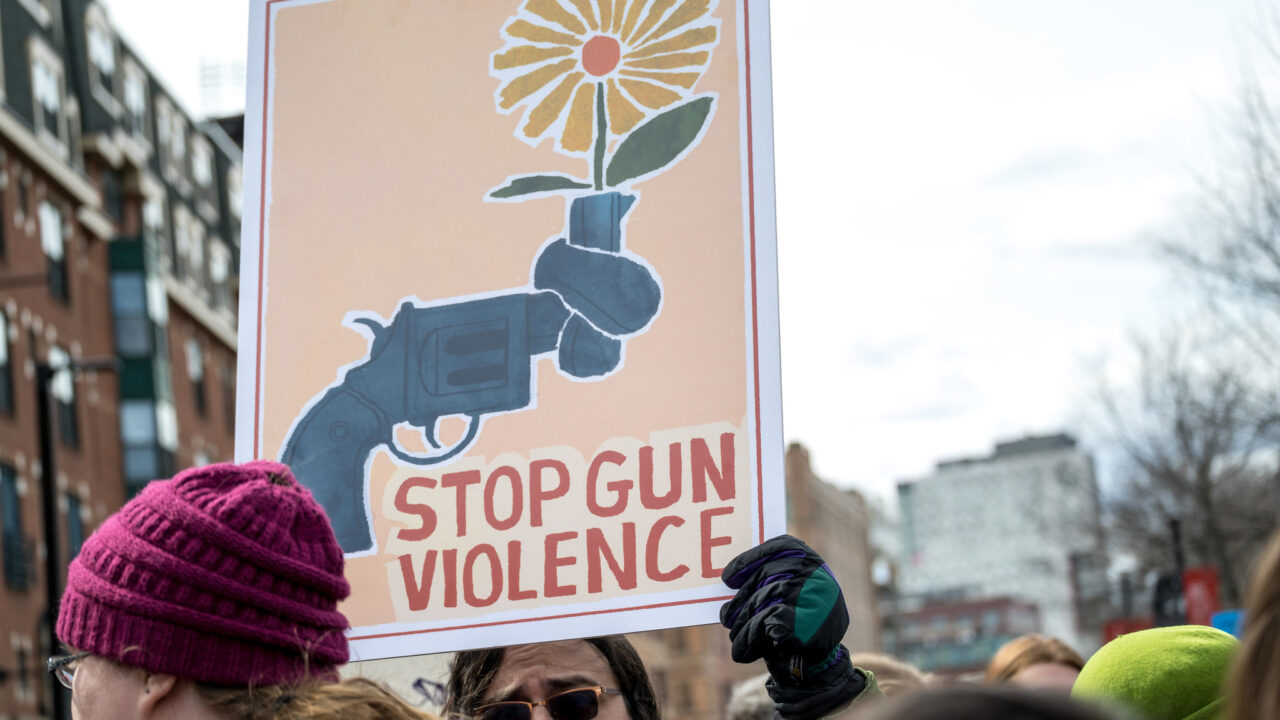Why Doctors Avoid Discussing Gun Safety With Patients
Despite a growing public health crisis, physicians cite many reasons for not talking about firearm safety with patients. According to the most recent data from the Centers for Disease Control and Prevention, 2021 was the second consecutive year in which guns were the leading cause of death among American children and teens. (Photo: Subhash Roy/Flickr/cc)
According to the most recent data from the Centers for Disease Control and Prevention, 2021 was the second consecutive year in which guns were the leading cause of death among American children and teens. (Photo: Subhash Roy/Flickr/cc)
In November 2021, a teenager with a handgun killed four students and injured seven people at Oxford High School, near Detroit. It was the deadliest school shooting in Michigan history. Just this month, on Feb. 6, the shooter’s mother was convicted on four counts of involuntary manslaughter. During a trial that scrutinized safe gun storage — or rather, a lack thereof — prosecutors alleged she failed to secure the gun at home and ignored warning signs about her son’s mental health.
Gun violence in the U.S. is a public health crisis. According to the most recent data from the Centers for Disease Control and Prevention, 2021 was the second consecutive year in which guns were the leading cause of death among American children and teens. That year, nearly 49,000 people died from guns — equivalent to one person every 11 minutes. A report from the Johns Hopkins Bloomberg School of Public Health showed that gun ownership sharply increases the risk of dying by homicide and suicide.
During a public health crisis, doctors have important roles and responsibilities. The U.S. gun epidemic is no exception. Many health professional organizations, including the American Medical Association and the American College of Physicians, recommend that primary care providers discuss firearm access and safety with adult patients. As gun deaths increase, it’s more important than ever for doctors to prioritize gun safety discussions with patients. But a recent study in the Journal of General Internal Medicine showed that the extent of this practice is unclear.
Providers mentioned lack of training and time constraints as barriers to addressing gun safety with patients.
At the time of the Oxford shooting, the study’s lead author, Joseph Ladines-Lim, was a second-year resident in the University of Michigan’s combined internal medicine and pediatrics program in Ann Arbor. In the tragedy’s aftermath, Ladines-Lim and colleagues launched a research project examining the practice of firearms screening at their institution.
“Do we even ask people if they have guns or not?” Ladines-Lim said. “If we’re screening, how does that work at our institution? And then when we do screen, how often are we providing appropriate counseling in terms of how to use firearms or store them safely? And then, are we documenting that at all?”
The data they collected suggest both providers and patients may avoid the topic. Ladines-Lim and colleagues surveyed 109 providers about gun safety counseling during new patient visits across 10 sites in the region. The survey included questions about prior training and whether providers knew the pre-visit patient questionnaire contained the screening question, “Do you have a gun at home?”
The researchers found that only 36 percent of providers felt comfortable talking about gun safety. One factor Ladines-Lim cites was a reluctance to jeopardize the doctor-patient relationship. “The issue of firearms in this country is a very polarizing one. It’s highly politicized,” Ladines-Lim said. “And it’s awkward.”
Most (89 percent) had no related training, and 32 percent were unaware of the pre-visit screening question. Views were divided on the importance of firearm safety talks; 45 percent of providers agreed that screening falls within their role, and 33 percent did not. However, providers were more likely to address gun screening in patients with mental illness and substance use disorders.
Providers mentioned lack of training and time constraints as barriers to addressing gun safety with patients. The health system is overloaded, Ladines-Lim explained, and there is never enough time to address all of a patient’s concerns. It would be reasonable, he said, to have doctors and clinicians focus on patients with high-risk factors, like depression, rather than screening all patients wholesale.
Campbell said, don’t blindside the patient. She believes a brief preface — such as, “Gun violence is the number-one cause of death for children, and I know you have children” — can help legitimize the conversation.
Ladines-Lim and colleagues also reviewed 501 patient medical charts. Zero patient charts documented gun safety counseling. More than half of new patients skipped the question about firearms on the pre-visit questionnaire but still completed the rest of the survey. The authors concluded that their decision to not answer was deliberate. “Maybe they don’t think it’s any of our business,” Ladines-Lim said.
As the study surveyed only a very small set of clinics, Ladines-Lim is unsure if their results can be extrapolated to the rest of the country. He and his colleagues think a broader survey spanning other medical centers and geographic regions would be of interest.
Guns in the home and domestic violence are intertwined. According to Everytown for Gun Safety, a nonprofit gun violence prevention organization, access to a firearm makes it five times more likely that a woman will be killed by a domestic abuser. Conversations about safe storage are crucial when talking with patients who have been abused, said Jacquelyn Campbell, a professor of nursing at Johns Hopkins University and an expert in domestic and intimate partner violence. “How do we get health care professionals to help women, particularly — or men — who are being abused by partners to disclose, to get help early, before it gets bad?”
First, Campbell said, don’t blindside the patient. She believes a brief preface — such as, “Gun violence is the number-one cause of death for children, and I know you have children” — can help legitimize the conversation. As another option, a short script can be programmed into electronic health record software and may alleviate providers’ concerns about time constraints.
Ladines-Lim agreed that with the right approach, patients may be more receptive: “Anything we ask, in general, we’re doing it because we have their interests at heart.” Some patients will never want to talk about gun safety, “and we accept that,” he said. But open and informed discussions can help prevent tragedies like the Oxford shooting and save lives.
And that doesn’t have to be political.
Your support matters…Independent journalism is under threat and overshadowed by heavily funded mainstream media.
You can help level the playing field. Become a member.
Your tax-deductible contribution keeps us digging beneath the headlines to give you thought-provoking, investigative reporting and analysis that unearths what's really happening- without compromise.
Give today to support our courageous, independent journalists.






You need to be a supporter to comment.
There are currently no responses to this article.
Be the first to respond.